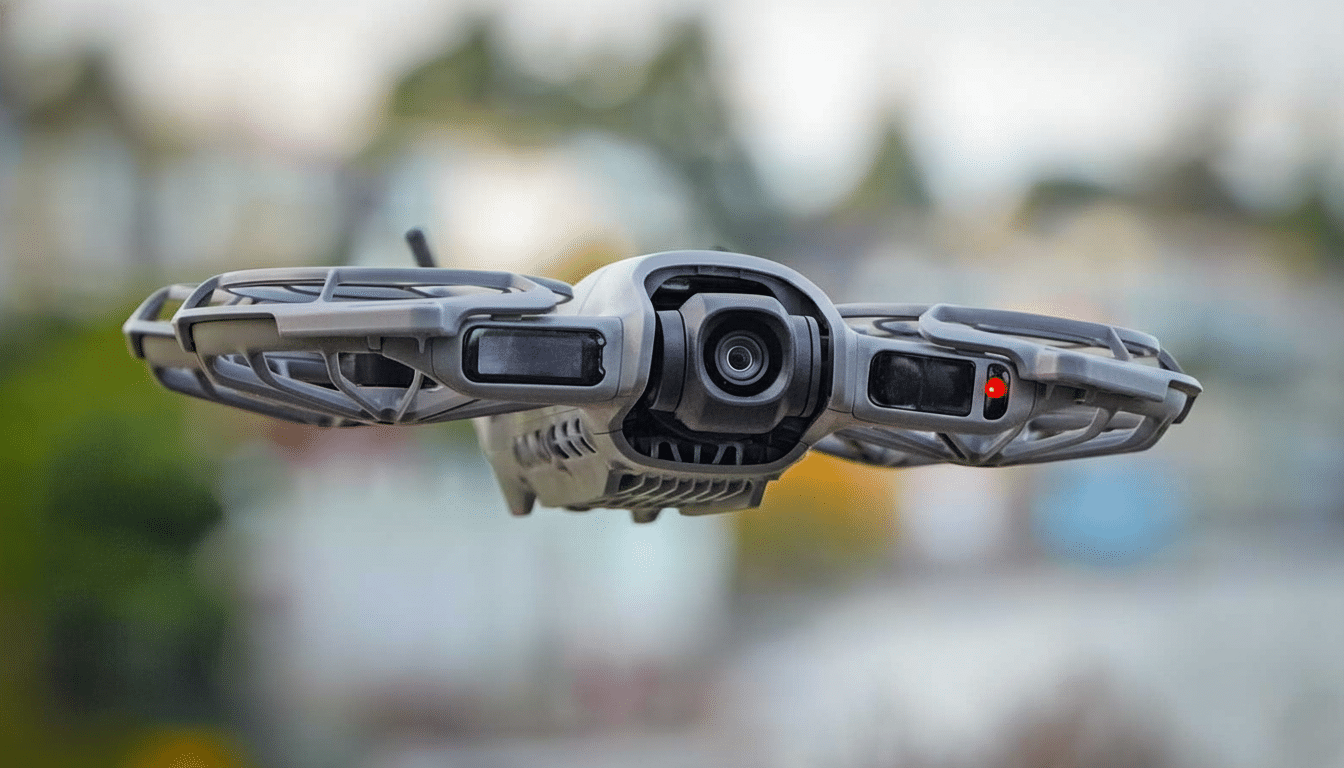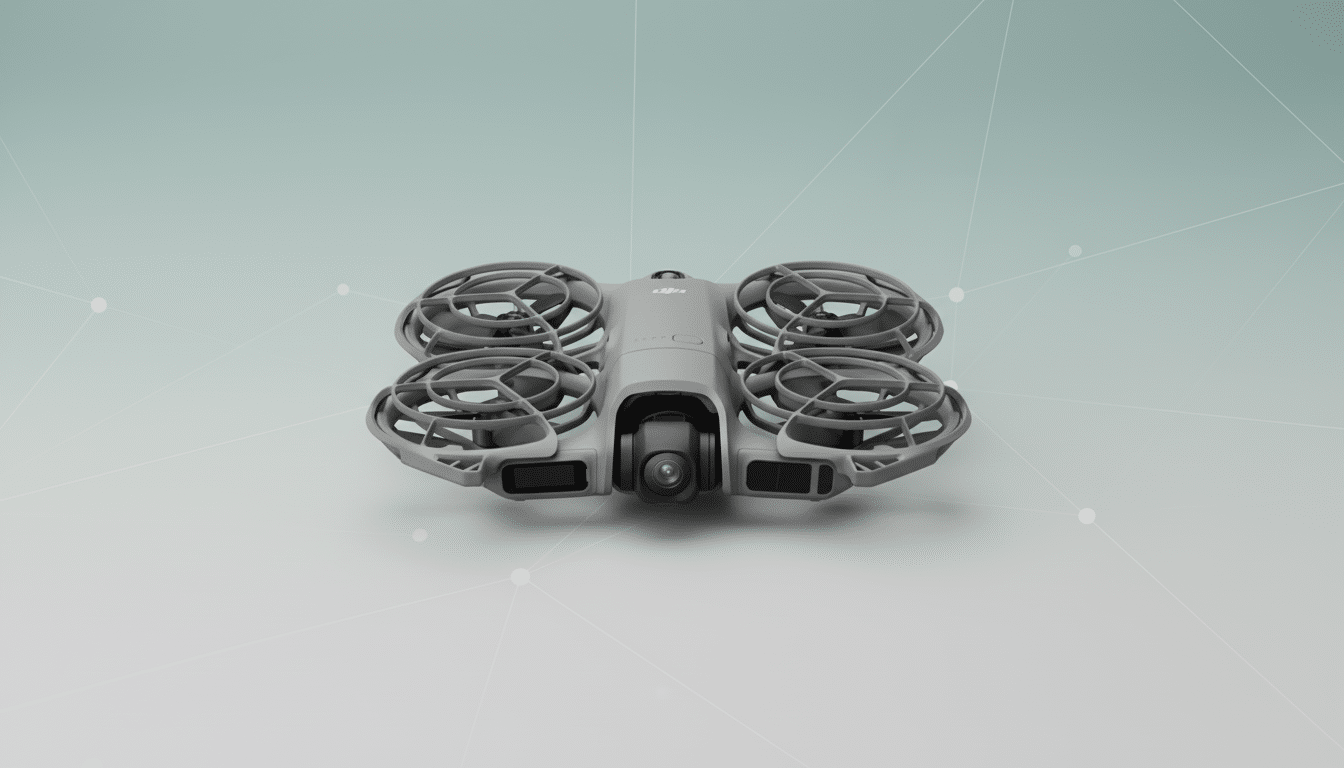DJI has launched the Neo 2, a palmtop-style follow-me camera drone that pushes into the next decade in the sub-250-gram class, featuring 4K video at up to 100 frames per second (fps) and packing 49GB of onboard memory, with a rated flight time of up to 19 minutes.
The small quadcopter is already beginning to surface in several international markets, but the lack of presence at significant U.S. retailers illustrates some uncertainty about future sales in the States.

What’s New and Notable in the DJI Neo 2 Drone
The Neo 2 is primarily designed around a 12MP, 1/2-inch CMOS sensor with an f/2.2 aperture, making it ideal for casual creators who want clean daylight footage without dealing with separate lenses.
Headline specs read 4K capture at up to 100fps for super-smooth slow motion as well as the increasingly standard 4K/60. DJI claims Level 5 wind resistance — approximately corresponding to gusts in the 10–14 m/s range on the Beaufort scale — not bad for a 151-gram airframe.
Storage is a quiet differentiator. With 49GB onboard, the Neo 2 can reportedly store approximately 105 minutes of 4K/60 video without a microSD card. And that’s really useful for new pilots who forget cards, or makers who want a super-lightweight kit. The drone also functions with hand launching, a sweet feature for hiking, beach shoot nights and times when there’s no room to take off flat.
While the Neo 2 looks like a follow-me camera, it goes a bit further with automation. Smarter shooting modes such as dolly zoom, slow motion and SelfieShot are designed to reduce friction in framing and pacing clips. It’s around 20 grams heavier than the original Neo, but still well below the 250-gram threshold employed by many regulators globally — meaning it is portable and, in a number of countries, subject to less stringent recreational-use regulations.
Pricing and market position for the DJI Neo 2
The early retail listing has the Neo 2 at $309 through Amazon Canada, a price that fits neatly into the low-to-mid-tier category of camera drones (a figure that’s aggressive in light of the 4K100 capability and internal storage — features often found on more expensive models or via add-ons). Since DJI hasn’t released a U.S. MSRP, international pricing is probably the best bet for now.
The battery life at 19 minutes is modest when put in contrast with larger foldable drones that exceed 30 minutes, but it’s comparable to ultralight aircraft where weight is severely budgeted. For creators, the solution is the same as it ever was: bring a bunch of extra batteries. The value proposition isn’t so much one of endurance; rather, it lies with a fast set-up time and the camera’s slow-motion chops.

U.S. availability for the Neo 2 drone remains murky
As the Neo 2 rolls out around the world, there’s a noticeable absence of it at DJI’s U.S. online store and popular big-box retailers in America, where plenty of listings are still showing completely out of stock for many products within DJI’s catalog. That gap follows continued policy headwinds that U.S. authorities have posed to the importing and new approvals of DJI products.
In 2024, policy introduced to Congress — including the Countering CCP Drones Act — aimed to place DJI on the FCC’s Covered List in order to prevent new DJI equipment authorizations inside the U.S. Some federal agencies have already been barred by earlier statutes from purchasing certain foreign-made drones, and the Pentagon’s Blue UAS program does not include drones that are made by DJI. The New York Times has reported that DJI’s commercial drones are used for spraying and crop analysis by many farmers across America, showing that whatever blanket restrictions were made could reverberate into agriculture and public safety operations.
As for consumers, the practical upshot is straightforward: don’t count on official availability any time soon. Third-party sellers offer units from time to time, but warranty support, firmware updates and regional compliance features may differ depending on market. DJI has not provided specifics on U.S. retail timing for the Neo 2.
Who the DJI Neo 2 drone is for and best suited to
Clearly DJI is trying to attract the first-time pilot, families and social video creators who are interested in cinematic shots but don’t have manual piloting skills. A 151-gram footprint, palm takeoff, and auto modes turn the Neo 2 into an effective “bring everywhere” sidekick for travel and outdoor sports, while 4K100 slow-mo ensures enough headroom for reels and shorts that look the part to compete on mobile.
Professionals may not confuse it for a larger-sensor rig, but the Neo 2’s internal storage and strong wind rating should tickle experienced fliers who desire backup or scouting drones. For anyone outside the U.S., it’s a no-brainer if you prioritize portability and fast, polished shots over max flight time.
Bottom line on the DJI Neo 2 drone and U.S. rollout
The Neo 2 arrives with an appealing blend of slo-mo power, plenty of internal storage and ultra-light convenience at a great price. The asterisk, and it’s a big one, is availability in the U.S., where policy scrutiny remains high. If you’re a buyer in a supported market, it appears to be one of the most powerful pocketable camera drones in its class. For Americans, the wait goes on — at least through official channels.

